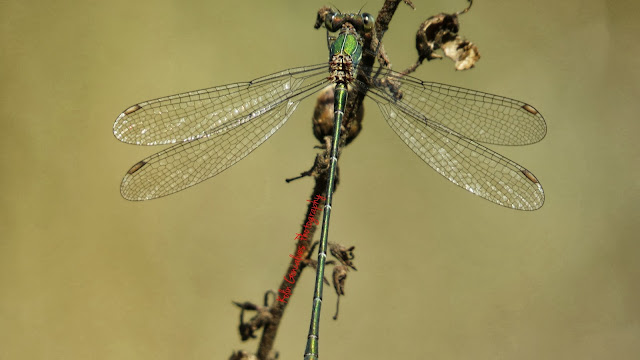Here are the two waterfalls vying for the title of "Greatest Waterfall on Earth"
Victoria Falls in Zambia/ Zimbabwe:
And Iguaçu Falls in Brasil/ Argentina:
First, lets get a few things straight.
I'm not talking about the tallest waterfall. That indisputable title goes to Angel Falls in Venezuela at an astonishing 979 meters high.
I'm talking about the greatest--the grandest, most spectacular, most magnificent, most awe-inspiring-- falls in the world.
In other words, which waterfall is the overall winner in ALL of these characteristics: big, wide, tall, powerful and beautiful?
Niagara, I'm sorry, you're not even in the running. Though you do have the highest average annual flow rate of 2407 cubic meters per second (Victoria: 1088 and Iguaçu: 1746), you don't even come close to being the length or height of Victoria or Iguaçu.
And one more thing...no, I'm not biased because I'm Brasilian. I have been to Niagara, Iguaçu and Victoria and all of them are beautiful in their own right. I'm a very honest person, and I will try to give you my most objective view from taking several different criteria into consideration.
The criteria for my judgment are:
1) The statistics: which is the tallest, longest, etc.
2) The views.
3) The environment/ landscape surrounding the falls.
4) The nature encountered near each fall.
First, the statistics:
HEIGHT: Victoria Falls has the highest single waterfall drop of 108 meters. But Iguaçu has two layers of falls on the Argentinian side, and each of these drops can be from 64-82 meters high.
LENGTH: Victoria Falls is the longest single curtain of falling water at 1,708 meters long. Thats really long. BUT, Iguaçu has a total length of 2,700 meters! That's close to a kilometer longer than Victoria.
WATER FLOW: I've already mentioned the mean annual flow, so let me tell about the largest recorded water flow: Vic Falls: 12,800 cubic meters/ second Iguaçu: 12,600.
So... In conclusion, Iguaçu is shorter than Victoria if you consider each individual drop, but if you count both of Iguaçu's drops together, it could be considered at least 20 meters higher than Victoria. Iguaçu is much longer than Victoria and has a comparable record of highest water flow.
Second, lets look at the views:
Iguaçu covers both walls of a wide, U-shaped canyon so views are expansive, but Victoria tumbles off one side of a canyon into a deep ravine so the best views are only from the air. At Victoria, if you don't want to fork over $150 for a 15 minute microlight flight or pay even more for a helicopter ride, then you will be limited to the sparse views on foot.
I'll let the photos speak for themselves. First, my photo (singular) of Victoria:
If you want to go visit any waterfall, you want to go in the wet season when that fall is at its fullest. I visited both Iguaçu and Victoria during the rainy season. But at Victoria, the volume of water causes a problem: the amount of spray is so great that you practically have no view at all in the wet season. The photo above is the ONLY decent photo I got of Victoria from the ground.
And in the dry season, Victoria looks like this:
Rather pitiful, since only one third of the canyon has water falling over it.
On the other hand, these are the various "on-foot" views of Iguaçu during the high water season. First, from Brasil's side:
And then, EVERYTHING gets even better on the Argentinian side! The views, the lower prices, the intimacy with the falls--everything. See! I told you I was an honest person. :) Here are the views from Argentina:
Do you see that boat at the bottom of the falls? That is a Brasilian boat. The Brasilian boats also get close to the Garganta do Diabo (The Devil's Throat) as seen in the top photo of above three photos. The Garganta do Diabo is the most powerful section of Iguaçu Falls. BUT the Brasilian boats cannot get close in the high water season because the power of the falls and the swirling current of the river are too great.
On the other hand, the Argentinian boats can always do this:
The closest you can come to drowning without seriously getting hurt is riding this motor boat under the spray of this waterfall! It is one of the most exhilarating and terrifying experiences I've ever enjoyed. To feel the pounding of the spray (not even the actual falls) and to hear the thunder of the water so close is indescribable!
Third, the environment:
Victoria Falls is in a dry savannah-like area with sparse trees except along the Zambezi River. The only verdant scenery near the falls is a little valley closest to the ever-present mists:
And a gorgeous valley it is! But it is such a small part of the environment near Victoria Falls. All one needs to do is look up to the left and see the parched, leaf-less trees on the other side of the canyon--the trees that weren't close enough to benefit from the mists of Victoria:
On the other hand, Iguaçu is always verdant.
Finally, the nature is our last criteria:
Here are the animals I saw at Victoria:
 |
| Vervet Monkey |
 | ||||||
| Chacma Baboon
And at Iguaçu:
|













































